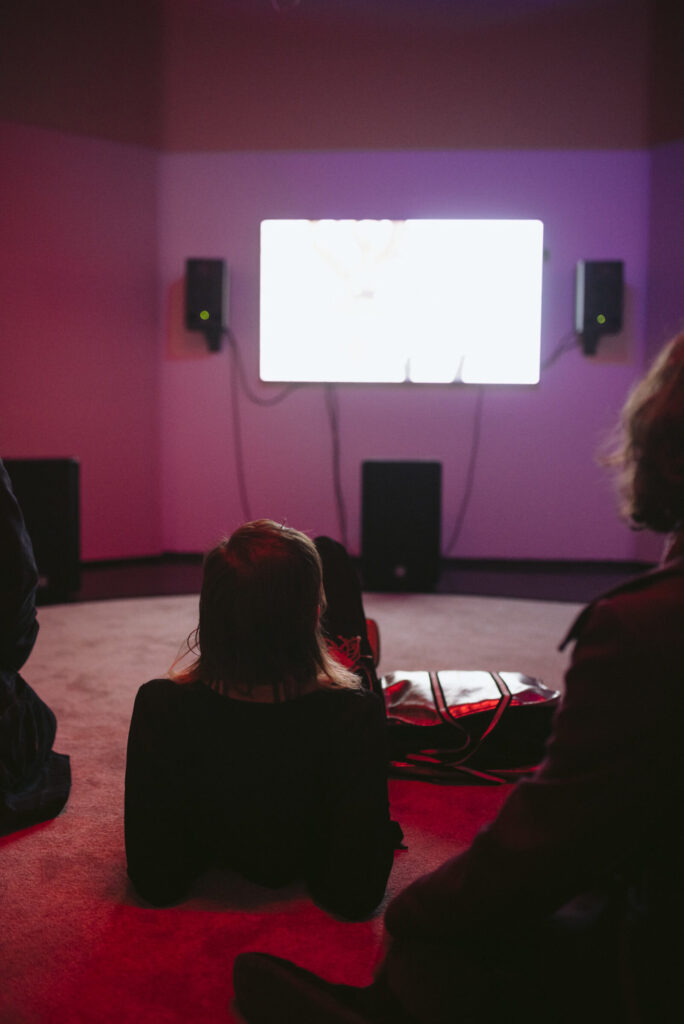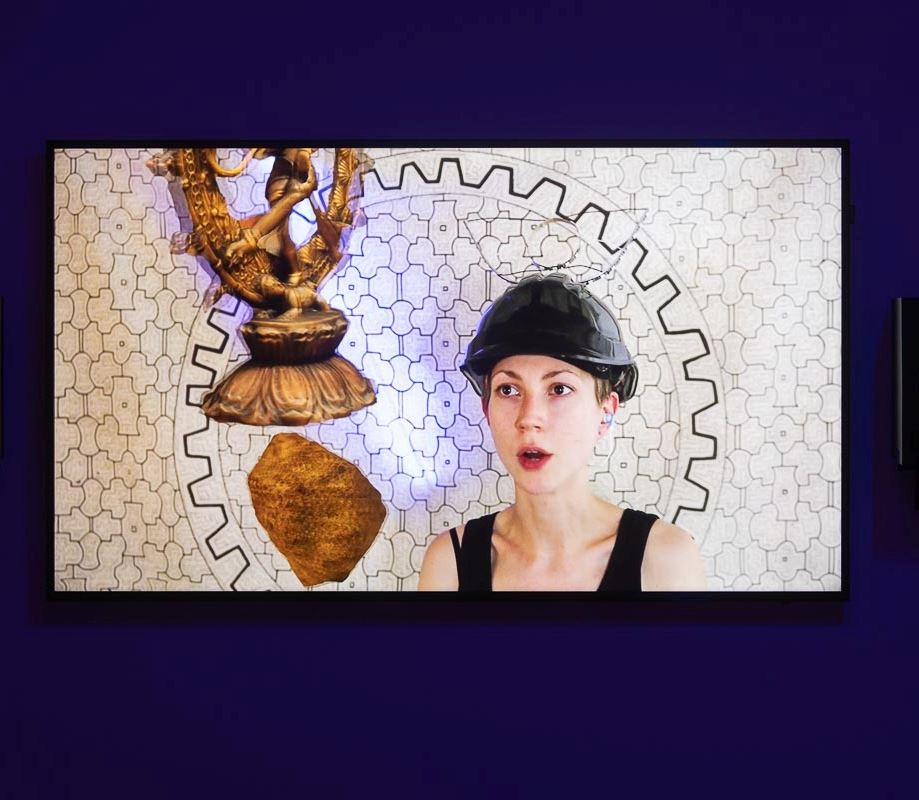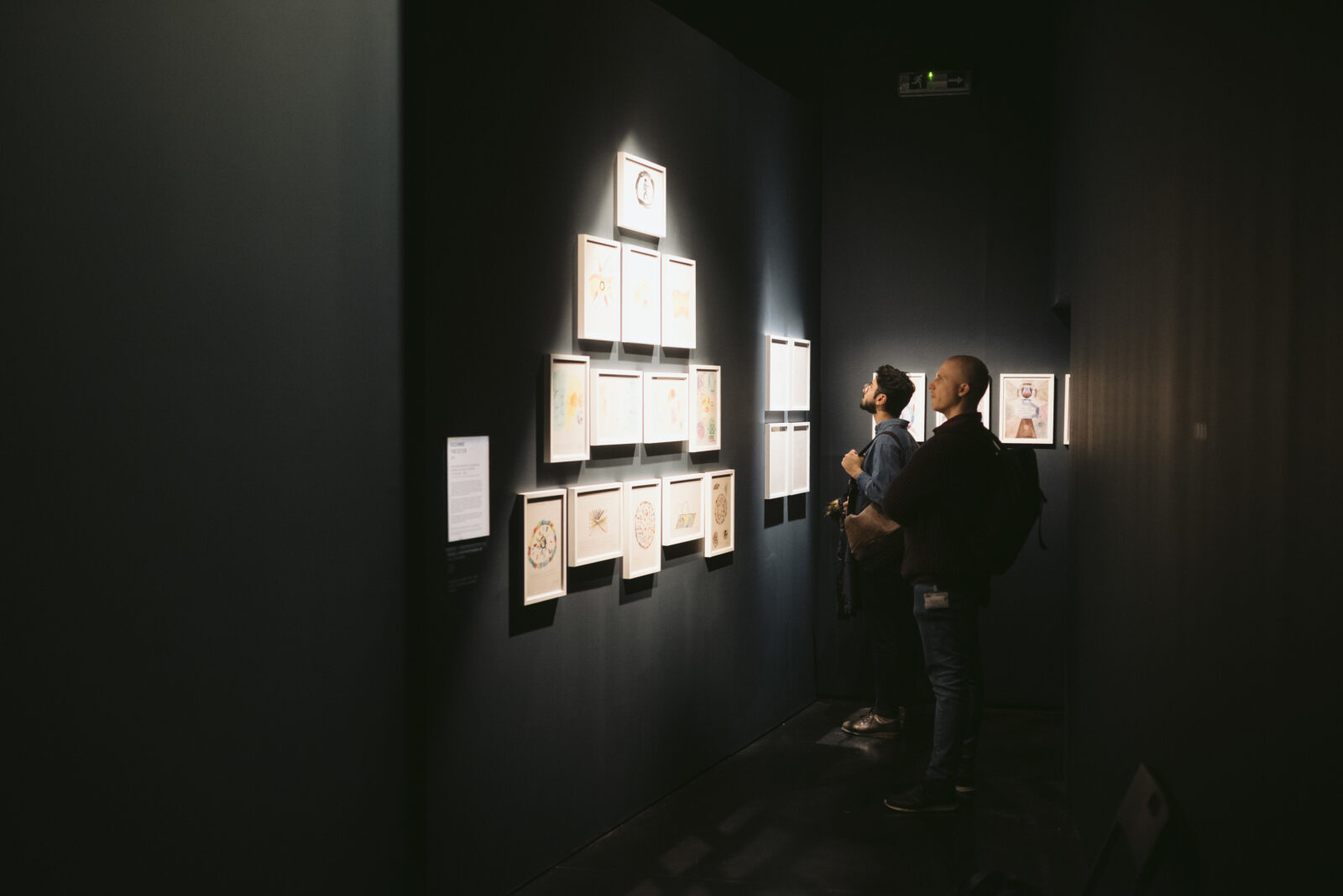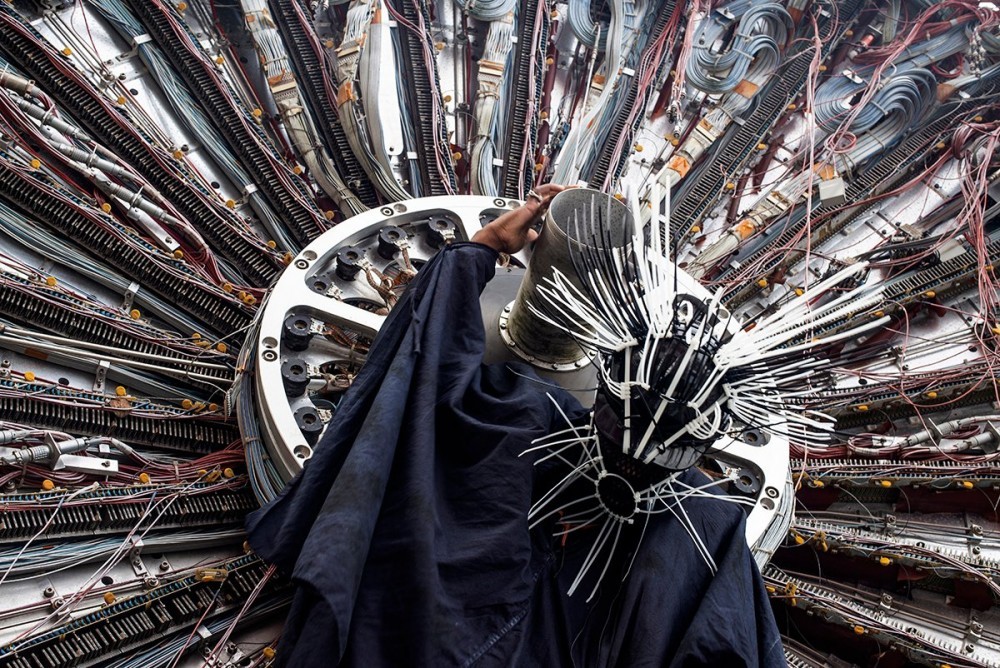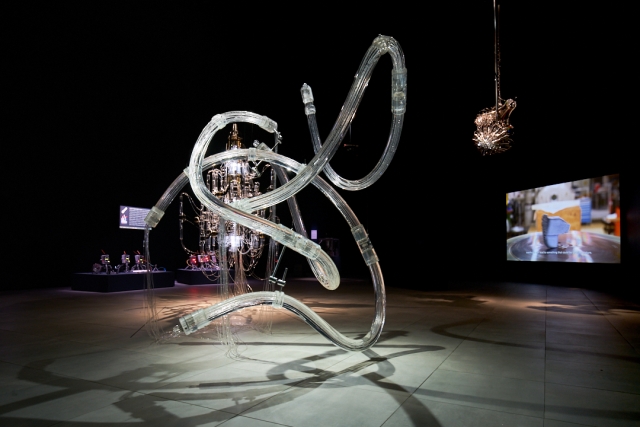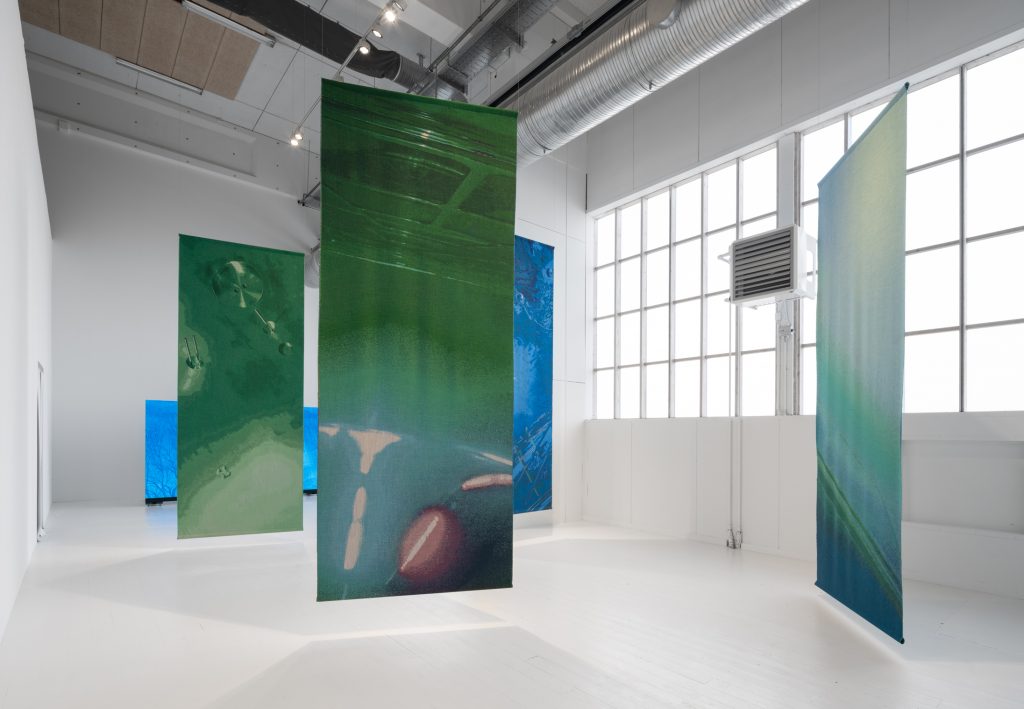- Year
- 2018
- Medium
- Single-channel video with 10-channel sound (8:30 mins); bespoke video synthesiser; installation environment
- Artistic Residency
- Collide

one1one examines language as a human technology
When describing fundamental physics, we use mathematics, which is defined as a sort of universal language. But the more we discover about the fundamental laws of the universe, the less the ‘real world’ makes sense.
one1one questions one of the dominant themes of 20th-century philosophy (and increasingly science): what is an appropriate language to describe the world, and how does that choice determine what can be known?
It fictionalises a situation in the year 4250, where spoken communication is rendered archaic and defunct due to supernatural, mystical and spiritual phenomena.
A video manifesto, combined with electric circuits which generate light, sound and disruptions to moving image creates a seemingly synesthetic installation. one1one examines language as a human technology: drawing on incantation. Through this series of sensorial stimuli, hrm199 aim to scrutinise the limitations of how human language can make sense of things, particularly the contradictions of meaning which can occur when it is used to describe fundamental science.
